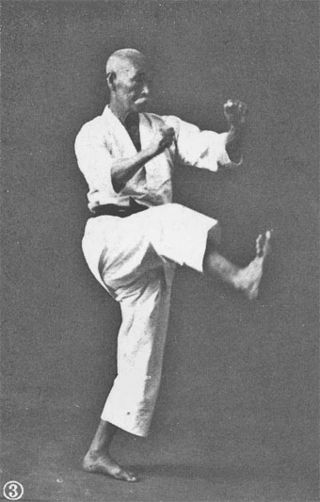
Karate (空手) is a martial art developed in the Ryukyu Kingdom. It developed from the indigenous Ryukyuan martial arts under the influence of Chinese martial arts, particularly Fujian White Crane. Karate is now predominantly a striking art using punching, kicking, knee strikes, elbow strikes and open-hand techniques such as knife-hands, spear-hands and palm-heel strikes. Historically, and in some modern styles, grappling, throws, joint locks, restraints and vital-point strikes are also taught. A karate practitioner is called a karateka (空手家).

Shotokan is a style of karate, developed from various martial arts by Gichin Funakoshi (1868–1957) and his son Gigo (Yoshitaka) Funakoshi (1906–1945). Gichin Funakoshi was born in Okinawa and is widely credited with popularizing "karate do" through a series of public demonstrations, and by promoting the development of university karate clubs, including those at Keio, Waseda, Hitotsubashi (Shodai), Takushoku, Chuo, Gakushuin, and Hosei.

Kyokushin (極真) is a style of karate originating in Japan. It is a style of stand-up fighting and is rooted in a philosophy of self-improvement, discipline, and hard training.
Bunkai (分解), literally meaning "analysis" or "disassembly", "is a term used in Japanese martial arts referring to process of analysing kata and extracting fighting techniques from the movements of a 'form' (kata). The extracted fighting techniques are called Oyo."
Keigo Abe was a prominent Japanese master of Shotokan karate who founded the Japan Shotokan Karate Association in 1999 and is its Chief Instructor. He held the rank of 9th dan in karate, was a direct student of Masatoshi Nakayama (1913–1987), and was a senior instructor in the Japan Karate Association.
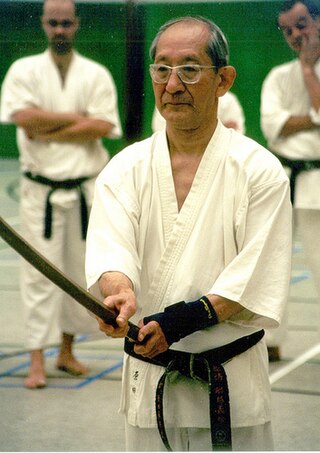
Mitsusuke Harada, MBE was a prominent Japanese master of Shotokai karate who introduced this martial art to Brazil and was after based in the United Kingdom. He founded the Karate-do Shotokai (KDS) organisation in 1965 and was its president. Harada held the rank of 5th dan, personally awarded by Gichin Funakoshi in 1956.
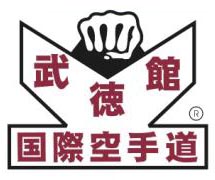
Gosoku-ryū (剛速流) is a style of karate which was founded by Takayuki Kubota. Gosoku stands for hard and fast, which suggests a combination of techniques both from the fast and dynamic Shōtōkan style as well as from the strength-focused Gōjū-ryū style.

Jūkendō (銃剣道) is the Japanese martial art of bayonet fighting, and has been likened to kendo.

Age-uke (上げ受け), which translates to "rising block", or "upward block" is the Japanese term for a technique used in martial arts. There numerous variations in how the technique might be executed, and nothing implicit in the term itself restricts its use to unarmed techniques. It is commonly used with regards to the Karate technique that goes by that name, but can also refer to similar techniques in Kobudo.

Tsutomu Ohshima is a prominent Japanese master of Shotokan karate who founded the organization Shotokan Karate of America (SKA). He is the Shihan of the SKA, and to this day holds the rank of 5th dan, which was awarded to him by Gichin Funakoshi. Ohshima’s branch of the Shotokan world has become known as “Shotokan Ohshima Karate-do.”
Hirokazu Kanazawa was a Japanese master of Shotokan karate. He was the Chief instructor and President of the Shotokan Karate-Do International Federation, an organisation he founded after he left the Japan Karate Association (JKA). Kanazawa was ranked 10th dan in Shotokan Karate.
Kazumi Tabata was an 8th degree Grand Master in Shotokan karate. Born in Japan in 1943, Master Tabata started karate at age 13 and received the rank of nidan in Shorinji as a freshman in high school. Master Tabata went to Waseda University and started studying Shotokan style karate under Master Isao Obata, one of Master Gichin Funakoshi's first students and first chairman of the Japan Karate Association. He founded the North American Karate-Do Federation (NAKF) and the New England Collegiate Karate Conference (NECKC), and lived in Massachusetts in the United States where he taught regularly until his death in 2020.

Teruyuki Okazaki, was a tenth degree black belt in Shotokan Karate, as well as the founder and chief instructor of the International Shotokan Karate Federation (ISKF). Along with Gichin Funakoshi and Masatoshi Nakayama, Okazaki helped found the Japan Karate Association's instructor training program.
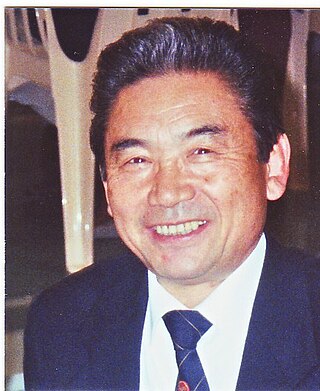
Takayuki Mikami is a Japanese master of Shotokan karate based in the United States of America. He holds the rank of 9th dan black belt in the art, awarded under the Japan Karate Association. In 1958, Mikami tied for first place in the All Japan Karate Championships. The following year, he became the All Japan champion in kumite (sparring) as well as kata (patterns). In 1961, Mikami won first place in kata again. He was also the first person to graduate from the Japan Karate Association's (JKA) instructor training program instituted by Gichin Funakoshi and Masatoshi Nakayama.
Shotokan Karate of America is a non-profit organization whose mission is to teach traditional karate-do in the United States. It was founded by Tsutomu Ohshima, a direct student of Gichin Funakoshi, the father of Shotokan karate. Ohshima is also recognized as the founder of many other SKA-affiliated Shotokan organizations worldwide. SKA's national headquarters are located in Los Angeles.
Takayuki Kubota is a Japanese American master of karate. He founded the Gosoku-ryu style of karate, and is the founder and president of the International Karate Association. Kubota holds the title of Sōke for his development of the Gosoku-ryū style of karate. He is also the inventor and holder of the trademark of the Kubotan self-defense key chain.

Henry Plée was a French martial artist who is considered as the 'father of European and French karate'. He was one of the rare 10th dan karate masters living outside Japan, and one of the few Westerners who held this rank. At the time of his death, Plée was also the oldest and highest karate ranking Westerner alive, with more than 60 years of fighting arts, including 50 in martial arts. He was a pioneer in introducing karate to France and Europe, and has taught most of today's highest ranking karate masters in Europe.
Masami Tsuruoka, was a Japanese Canadian karate instructor and practitioner recognized as "The Father of Canadian Karate" by Black Belt Magazine. Although mainly responsible for establishing the Chito-ryu style in Canada, Tsuruoka is also known as founder of his own karate style known as Tsuruoka Ryu.
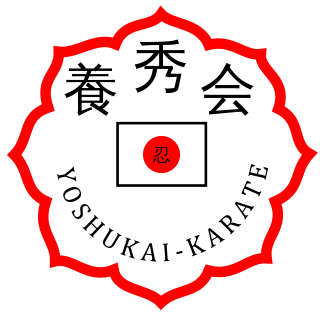
Yoshukai is a Japanese style of Karate–dō. Karate-do. Karate-do translates as "Way of the Empty Hand." The three kanji that make up the word Yoshukai literally translate as "Training Hall of Continued Improvement." However, the standardized English translation is "Striving for Excellence." Yoshukai Karate has been featured in Black Belt Magazine. Yoshukai karate is separate Japanese style from Chito-ryu. Kata, kobudo, kumite, and all karate aspects are drawn from the Founder, Mamoru Yamamoto. Yoshukai is a newer derivative Japanese style.
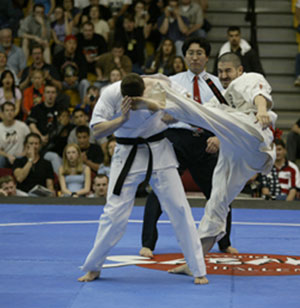
American Karate was first introduced to American service men after World War II by Japanese and Okinawan karate masters.












